In vitro fertilisation (IVF) is a method of insemination in which an egg is combined with sperm outside of the body. The procedure involves tracking and stimulating a woman's ovulatory system, extracting an ovum or even ova (egg or eggs) from her ovaries, and then allowing sperm to fertilise it in a fluid in a laboratory. After the fertilised egg (zygote) has gone through embryo culture for 2-6 days, it will be implanted in the same or another woman's uterus with the goal of producing an active conception, as stated in an IVF treatment.
IVF is a type of assisted reproductive technology that is used to treat infertility and perform gestational surrogacy procedures. A fertilised egg could be inserted into a surrogate's uterus, and the resulting child is genetically unrelated to the surrogate. Some countries have outlawed or limited access to IVF treatment, allowing for an increase in fertility tourism. The limitations on IVF availability include costs as well as age, in order for a woman to have a proper pregnancy to term. IVF is often used only after many less intrusive or costly treatments have failed or have been determined to be unlikely to function, according to the IVF specialist.
In vitro fertilisation is a treatment for infertility and genetic disorders. Before undergoing IVF to treat infertility, you and your spouse may be able to explore various treatment methods that require fewer or no procedures to enter the body. Fertility medicines, for example, can stimulate the ovaries to produce more egg cells. Intrauterine insemination is a treatment that delivers sperm directly in the uterus near the period when an ovary produces an egg, known as ovulation.
Sometimes IVF is used as the primary treatment for infertility in persons over the age of 40. It can also be done if you have specific medical issues. For example, IVF may be an option if:
People who do not have a working uterus or for whom pregnancy poses a major health risk may choose IVF in which another person carries the pregnancy. The person is known as a gestational carrier. In this situation, your eggs are fertilised with sperm, but the embryos produced are implanted in the gestational carrier's uterus.
IVF can be performed by gathering the ingredients from a woman's fallopian tubes or even uterus following organic ovulation, combining them with sperm, and then reinserting the fertilised eggs into the uterus. However, without additional procedures, the chances of conception will be extremely low. Additional methods commonly used in IVF include ovarian hyperstimulation to produce a large number of eggs, ultrasound-guided transvaginal oocyte retrieval directly from the ovaries, co-incubation of eggs and sperm, and culture and even collection of resulting embryos prior to embryo transfer into the uterus, according to the IVF physician.
Ovarian HyperstimulationOvarian hyperstimulation is the stimulus that causes the progression of many follicles in the ovaries. It should begin with response prediction based on factors such as age, antral follicle count, and anti-Müllerian hormone level. The ensuing forecast of, for example, a weak or hyper-response to ovarian hyperstimulation determines the method and dose of ovarian hyperstimulation, according to an IVF specialist at the Dr. Sudha Tandon's Fertility & IVF Center and test tube baby treatment centre.
Mild IVF is a procedure in which a low dose of ovarian stimulating medicines is utilised for a brief period during a woman's natural cycle in order to generate 2-7 eggs and subsequently grow healthy embryos. This procedure appears to be an advancement in the field of reducing issues and unpleasant reactions for women, with an emphasis on excellence rather than the number of eggs and embryos. One study compares a moderate therapy (mild ovarian stimulation with GnRH antagonist co-treatment and single embryo transfer) to a natural cure (stimulus with a GnRH agonist long-protocol and the transfer of two embryos). The results show that the ratios of cumulative pregnancies that resulted in term live birth after one year were 43.4% with mild cure and 44.7% with normal treatment. Mild IVF may be less expensive than typical IVF, with a significantly decreased risk of multiple gestations and OHSS.
Last maturation inception.While the ovarian follicles have reached a certain amount of size, the final stage of oocyte maturation begins, typically with an injection of human chorionic gonadotropin (HCG). Often referred to as the trigger shot, hCG acts as a luteinizing hormone analogue, causing ovulation between 38 and 40 hours. Despite the fact that only one HCG dose is administered, egg retrieval occurs at any time, often between 34 and 36 hours after the HCG shot, well before the follicles burst. It allows for the arrangement of the egg retrieval process during the period when the eggs are fully developed. The HCG shot poses a risk of ovarian hyperstimulation syndrome. Using a GnRH agonist instead of hCG reduces the risk of ovarian hyperstimulation syndrome, but at a reduced delivery rate when the embryos are transferred fresh. As a result, many medical centres would deep freeze all oocytes or embryos after an agonist trigger, according to the IVF specialist.
Egg retrievalThe eggs are obtained from the patient through a transvaginal procedure known as transvaginal oocyte retrieval, which involves piercing the vaginal walls with an ultrasound-guided needle to reach the ovaries. During this procedure, follicles may be aspirated and the follicular fluids transported to an embryologist to differentiate ova. It is common to pull out between 10 and 30 eggs. The retrieval process typically takes between twenty and forty minutes, depending on the number of mature follicles, and is commonly performed under conscious sedation or even general anaesthesia, according to IVF Clinics.
Planning for both eggs and spermIn the laboratory, the diagnosed eggs are stripped of cellular debris and thoroughly prepared for fertilisation. An oocyte selection procedure could be performed just before impregnation to select eggs with the best chances of successful conception. Meanwhile, semen is prepared for fertilisation by eliminating latent cellular debris and seminal fluids in a process called sperm cleaning. When a sperm donor donates semen, it is normally carefully prepared for a cure before being frozen and quarantined, and it will be thawed and ready for usage, according to the Best IVF specialist.
Co-incubationTo guarantee proper fertilisation, the sperm and egg are incubated together at a ratio of approximately 100000:1 in a culture medium. A study conducted in 2013 concluded that a period of co-incubation of one to four hours results in significantly higher pregnancy rates than sixteen to twenty-four hours. Typically, the egg is fertilised throughout co-incubation, but it will have two pronuclei. In some cases, such as poor sperm count or motility, a single sperm can be pumped directly into the egg via intracytoplasmic sperm injection (ICSI). The fertilised egg is transferred to a specific growth medium and allowed for 48 hours until the egg has 6 to 8 cells, according to the IVF specialist at Dr. Sudha Tandon's Fertility & IVF Center.
Embryo cultureThe most essential stages of embryo culture occur during the cleavage phase (days 2 to 4 after co-incubation) or even the blastocyst phase (days 5 or 6 after co-incubation). Embryo culture until the blastocyst phase increases the live birth rate per embryo transfer while also reducing the number of embryos designed for removal and embryo cryopreservation, so cleavage phase transfer improves cumulative medical conception rates. The live birth rate does not differ between transmission days two and three after fertilisation. Preterm delivery (chance ratio 1:3) and congenital defects (probability ratio 1:3) are significantly more common among newborns harbouring embryos cultured till the blastocyst phase than at the cleavage stage, according to the test tube baby treatment centre.
Embryo assortmentLaboratories use established grading methodologies to determine oocyte and embryo quality. To maximise conception rates, there is plenty of evidence that a morphological scoring approach is an excellent method for selecting embryos. Since 2009, when the first time-lapse microscopy approach for IVF was validated for medical use, morphokinetic scoring systems have shown to improve conception rates even more. However, when many different types of time-lapse embryo imaging products, with or without morphokinetic scoring techniques, are compared to traditional embryo evaluation for IVF, there is undoubtedly insufficient evidence of a difference in live-birth, conception, stillbirth, or miscarriage to choose the IVF doctor from the infertility treatment centre.
Embryo transferThe quantity to be transmitted is determined by the amount available, the lady's age, and various other health and diagnostic factors. Unless otherwise specified, an optimum of two embryos is transmitted in countries such as Canada, the United Kingdom, Australia, and even New Zealand. In the United Kingdom and also under HFEA regulations, a woman over the age of forty may have up to three embryos transferred, whereas in the United States, there is no legal limit on the number of embryos that may be transmitted, despite the fact that healthcare organisations have provided practice recommendations. Many treatment centres, as well as national regulatory agencies, try to decrease the risk of multiple pregnancies, as it is very uncommon for many embryos to embed when numerous embryos are transported. A small, plastic catheter is used to deliver embryos to the patient's uterus, passing through both her vagina and cervix. Many embryos can be put into the uterus to increase the chances of implantation and pregnancy, according to Dr. Sudha Tandon's Fertility & IVF Center.
Success RatesMost IVF methods have high success rates. Depending on the technique of estimation used, this figure may represent the number of established pregnancies, known as the maternity rate, or the number of live births, known as the live birth rate. The accomplishment rate is determined by factors such as maternal age, the cause of infertility, embryo level, previous reproductive history, and lifestyle factors. As a result of advances in reproductive technology, IVF success rates are much greater today than they were a few years ago, according to the IVF Treatment cost.
IVF increases the likelihood of specific health issues. These dangers range from short to long term, including:
Test Tube baby treatment or IVF treatment is done for couples who do not conceive by the natural method. In a natural pregnancy and in IUI, the fertilization of the egg and sperm happens inside woman's body. In IVF/ ICSI, the fertilization is done outside the body - in the ART laboratory. The term “test-tube baby,” prior to the development of in vitro fertilization technologies in the twentieth century, was used to refer to babies born as a result of artificial insemination. Since all these procedures assist reproduction, they are called as Assisted Reproductive Techniques (ART).
Kanupriya Agarwal, India’s first test tube baby was brought into life in the year 1978 by the hands of Dr Subhash Mukhopadhayay, a physician from Hazaribagh, Bihar (now Jharkhand), succeeding the world’s first test tube baby Marie Louise Brown born in United Kingdom by just 67 days.
Indications - Assisted Reproductive Techniques (ART).
Woman with PCOS/endometriosis
Cause of infertility is unknown.
It is also advised in men with a borderline low sperm count and for those who are in touring jobs.
Donor sperms are used in men who have no sperms in their semen.
Low Sperm Count.
Tubal Block.
Severe endometriosis and Polycystic Ovarian Syndrome.
Unexplained infertility.
Failed Previous IUI cycles.
Infertility due to any cause refractory to conventional medical and surgical management.
Women with poor ovarian reserve
Women wanting to use donor eggs or for surrogacy treatment
Dr Sudha Tandon has two test tube baby centers in Mumbai and Navi Mumbai respectively. Both the test baby centers are the best IVF Centers in India and managed by Dr. Sudha Tandon and team. She has been helping couples to fulfill their dream of parenthood. She and her experienced team have helped over 3000 couple’s battle various fertility issues for more than 25 years.
The test tube baby center in Chembur and Vashi offer wide range of assisted reproductive procedure which are as follows:
Intrauterine Insemination (IUI)
In-vitro Insemination (IVF)
Intracytoplasmic Sperm Injection (ICSI)
PESA/ TESA/ TESE – surgical aspiration of sperms from epididymis / testes
Surrogacy and Donor’s Egg/oocytes
Fertility preservation (freezing of sperms/ oocytes/ embryos)
PGS / PGS – identify genetic defects in embryos. This prevents certain genetic diseases or disorders from being passed on to the child.
The test tube baby center in Chembur is open 24x7, whereas the Vashi center is a day care center.
The Success rate of IUI treatment at our center is 20-25 %
The Success rate of IVF treatment at our center is 40-50%
The Success rate of ICSI treatment at our center is 40-50%
We at Dr Sudha Tandon’s fertility, IVF, Gynaec Endoscopy and Maternity center have helped over 3000+ couple battle various fertility issues in last 25 years.
We at Dr Sudha Tandon’s fertility, IVF, Gynaec Endoscopy and Maternity center have all world class facility for laparoscopic and Hysteroscopic surgery for all pelvic pathologies and Intrauterine Insemination (IUI) / In-vitro Insemination (IVF) and Intracytoplasmic Sperm Injection (ICSI) treatment for Assisted Reproductive Techniques (ART).
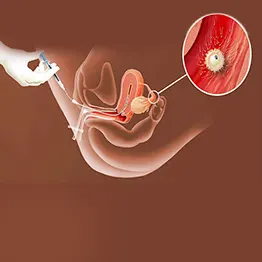
We are happy to have treated more than 20,000 couples with fertility issues. IUI is simple treatment for couples with unexplained Infertility, PCOS, early endometriosis Know More
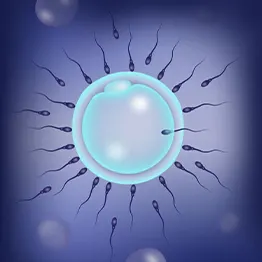
Indicated in couples with tubal blockage, repeated failed IUI and endometriosis. Results range across 40 -50% at our centre Know More
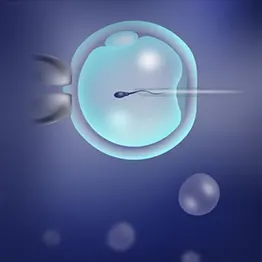
Treatment of choice for male infertility with very low sperm count, obstructive azoospermia and for coupes requiring donor eggs. Know More

Many young men and women have utilized our fertility preservation services in the form of sperm, egg and embryo freezing either for medical or social reasons Know More

More than 3000 women have delivered at our centre. They have had an exceptional experience in antenatal care, delivery and postnatal care. Know More
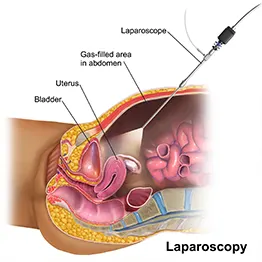
We have been performing all Gynaec surgeries through Laparoscopy for the past 25 years. Advantages are it is safe, less painful Know More
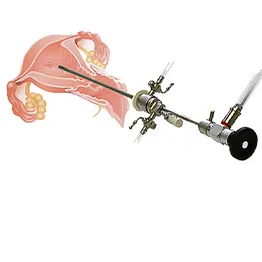
Hysteroscopy has many advantages over traditional D & C. We are equipped with small telescope to diagnose and treat pathologies inside the uterine cavity Know More
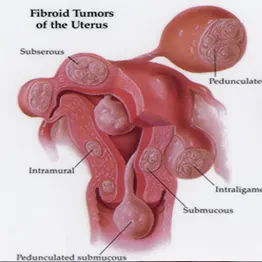
Fibroid causes infertility, pain and excessive menstrual blood loss. They can be operated through Laparoscopy or Hysteroscopy Know More
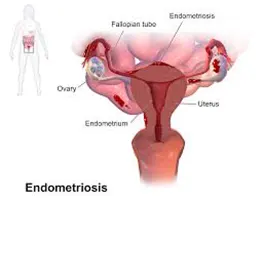
Endometriosis causes infertility and painful periods. Best treatment is initiated by Laparoscopy surgery and drugs Know More
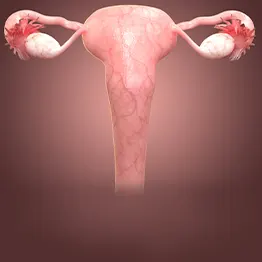
We have been performing laparoscopic hysterectomy for the past 25 years. It is a definitive treatment for heavy menstrual bleeding, fibroids, cancer Know More
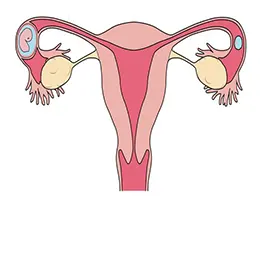
Ectopic is a condition where the pregnancy gets implanted in the fallopian tube instead of the uterine cavity. We have operated many cases laparoscopically Know More
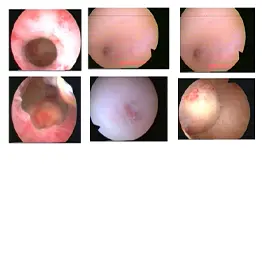
Hysteroscopy helps in evaluating the cause of Postmenopausal bleeding Know More

MD. DGO.,
Gynaec Endoscopy Surgeon Fertility and IVF Consultant

M.S. Obgy,
Fellowship in Reproductive Medicine and IVF (London), Minimal Access Surgery and Ultrasound
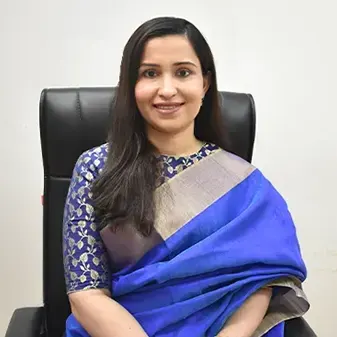
MS, DNB Obgy,
Fellowship in Reproductive Medicine and IVF (London), Minimal Access Surgery and Ultrasound
-Very satisfied.
-Doc Support indeed was very good .
-Nurse Support was absolutely Beneficial and excellent.
-Cleanliness was upto the mark.
-Hospitality made the stay comfortable.
KEEP IT UP!
Harshita Chhajed
We were so ecstatic on 9thapril 2022 as we hold our baby boy in our hands. We are so grateful as we were in the bestest and safest hands. All this was possible because of the talented doctors like you all-Dr Sudha Tandon, Dr Aditi Tandon, Dr Amrita Tandon and Dr Sachin. Dr Sudha Tandon and DrAditi Tandon helped us in our pregnancy journey by making themselves available all the time on phone. All our queries/questions were answered in no time which is by far the best response we could have received during covid times.
All doctors have given us bestest suggestions during our pregnancy journey in which we always had an utmost faith. It was a great time spent with you all during this pregnancy.
Thankyou so much for all the help/assistance/suggestions. We will always recommend Dr Tandon to our friends and relatives.
Sheela C Potdar
Dr Sudha Tandon and her two daughters make you feel comfortable and at ease. The flow of the process was smooth without making the patients wait unnecessarily.
Ashrita Katyal
Staff very polite and cordial.
Clean and neat hospital.
Cheerful ambience.
Doctor was very cooperative understanding and most importantaly non-judgemental. Made talking easier.
Thankyou for this wonderful offer and for making these tests accessible to all.
Odette Fred
-Staff very pleasant and polite.
-Dr too very polite.
-No waste of time.
-Clean place.
-Gives a good feel and not a nervous hospital feel.
Rosa Fred
Dr Sudha Tandon is one of the most oldest and the bestgynac in Chembur. Very good initative taken by them to keep a watch on the womenshealth on the occasion of the womensday.glad to see her daughters doing the job same as their mom.
All the best to both of them.
Thankyou
Satpal Bhambri
Thankyou for arranging this camp and providing services at affordable prices. The entire doctors team and also everyone right from the front desk staff to the staff nurses are really very cordial and soft-spoken.
My mother literally has a OBGY phobia :-o yet when she stepped out of the consulting room,she only told me they are all really great especially Dr AditiMaam.
Keep up the good work! I always recommend your name whenever any relatives/friends ask for a good OBGY in town.
Thankyou
Regards,
Dr Aditi Prabhu
Pratima Prabhu
-Very well organized.
-The staff is very competent.
-Quick process without any difficulties.
-Excellent time Management.
Kavita Bhatti
It is always reassuring to talk to Dr Sudha Tandon, Dr Amrita and Dr Aditi. It is for their expert advise and their compassionate approach that makes me come back to them for all my health related concives. I know I am in good hands.
Sheetal Patil
Thank you for this camp. Was done professionally and good staff.
Thanks again.
Kavita R.
Got to hear from a friend about this women’s day camp. Very well organized camp by Dr Sudha Tandon.
The price works well for all.
Thank-you
Mrs. Harvinder Saggi
I was absolutely satisfied with Doctor Amrita’s Consultation.
She cleared all my queries.
Thank you for having this women’s day camp.
Its really helpful.
Gunwant Saggi
My mother has also been Dr Sudha Aunty’s patient and it was but natural for me to follow same.I would like too extend my gratitude and thanks to Dr Sudha aunty for being there for me at every step.My sincere thanks to Dr Aditi and Dr Amrita who have always had my back and responded to every query and doubt with great promptness. Dr Aditi has been my “go-to-person” in times of anxiety.
A big thank you to all three of there for everything. I couldn’t have pulled this off without your support.
Dr Jayeeta Verma
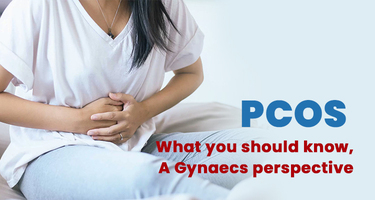
PCOS is a hormonal and Metabolic condition that affects women […]
04 Jun 22

IUI is a simple form of fertility treatment where motile […]
06 Aug 22
What is infertility ?
If the couple has regular intercourse, does not use any contraception and still does not conceive within one year, they are said to be infertile. 80-85% of the couples conceive within one year of unprotected intercourse i.e. without the use of any contraceptive. However, the rest 15-20 % who are unable to conceive naturally are said to be infertile and these would require proper evaluation and help for getting pregnant.
Does fertility depend on age?
Yes, in a woman fertility does depend on her age. A young woman is naturally more fertile as she has more number of good quality eggs than a woman who is 35 +. Hence a woman who is 35 + should not wait for a long period for a natural conception and should seek help from a proper fertility expert. Also the chance of genetic abnormalities and medical complications like Hypertension and Diabetes increases with age.
When should a couple seek medical help for infertility?
If the woman is below 35 years and has normal menstrual periods, and the couple has tried for a conception for a year with a frequency of sexual intercourse 3-4 times a week during the fertile period and has yet not conceive, then they need to consult an Infertility expert.
How does body weight, diet & exercise affect fertility?
For increasing the chance of pregnancy, balanced body weight of the woman would be beneficial. Being obese or grossly underweight affects the maturation of eggs in the woman and hence may affect her fertility. Also, a grossly obese woman would have mechanical difficulty in having normal sexual relations. Regular, moderate exercise especially in the form of yogasanas, walking, swimming, or jogging prove beneficial for fertility. It has been observed that strenuous form of exercises for example jogging over 3 miles a day can hamper ovulation and hence may lead to decrease in fertility in the woman. Balanced and nutritious diet help increase the chances of conception and ensure proper growth of the fetus.
Is stress a major factor in infertility?
Chronic stress may interfere with the ovulation, may decrease the sexual desire and hence affect the frequency of sexual intercourse in the couple.
How would one know the cause of infertility?
A detailed history of both partners is very helpful in giving a clue to the cause of infertility. For e.g. anovulation is the cause of infertility in a woman who has irregular periods and who is also obese, blocked fallopian tubes in a woman with previous history of pelvic infection, low sperm count in a man with past history of mumps. Examination of both the partners, and getting the required investigations would give a complete picture.
What are the most stressful stages of IVF?
A natural conception is obviously what all couples desire and wish when they plan a pregnancy but when it does not happen and the couple is counselled for an IVF treatment, it creates lots of stress for them.
The most stressful part is the acceptance of the fact that IVF is the only best option for their problem. A good discussion with the doctor to understand about Human Reproduction and why IVF is the best option for them to conceive will help the couple .They should take their time to understand about what the treatment involves and always ask questions to get their doubts cleared. A session with the counsellor would definitely help. Speaking to friends and family who are knowledgeable is a good way to reduce the stress but at times it could be counterproductive especially if they only talk of the problems and are themselves not positive.
In an IVF treatment, the woman’s eggs and her partner‘s sperms are fertilised in a laboratory. To get her eggs, she needs to take hormonal Injections on a daily basis and at the same time every day. This could create some stress especially if she is in a demanding job. It is best that she confides in someone who is reliable and understands the intricacies of an IVF treatment. The best part is that these Injections are not painful as very fine needles are used and she could also self-administer it.
She needs to see her fertility specialist for the follicular tracking for about 4-5 times in a cycle. This could also be demanding and stressful. She should just take all this in her stride and not get unduly stressed. The follicular response may not be satisfactory especially in a woman with poor ovarian reserve and she could become stressed.
She could have stress on the day of egg retrieval because of the fear of pain but this is a small procedure which is done under safe anaesthesia. The procedure is done through the vagina and there are no cuts on her abdomen. This is simple and safe procedure, not painful. At times the male partner gets stressed and is unable to give his semen sample on the day of egg pickup. To avoid this problem, almost all fertility centres will freeze the semen sample beforehand as a backup.
Of course the other stressful point is to worry about the numbers and quality of eggs got at the time of pickup, the fertilization of the eggs, and the numbers of good quality embryos. All these are important form success point of view. A communication with the couple before the procedure will allay all their fears and will go a long way in taking care of the stress.
The most important step in IVF Treatment
The most important step in IVF is Embryo transfer for which the woman should relax. Generally it is done without anaesthesia. The woman‘s cooperation is so very important for favourable results.
After the embryo transfer one has to wait for about 10 days to know the results. It could be very stressful at this stage. She should try to be calm and not just keep thinking of the results. After the embryo transfer the woman has to use either progesterone vaginal tablets or Injections and the stress of finances adds to the stress of procedure.
All in all we do understand the stress that the couple undergoes for an IVF treatment cycle. Have trust in your doctor and you would definitely become a successful.
At our IVF Clinic in Mumbai and IVF centre in Navi Mumbai, we spend quite a lot of time to make you feel comfortable. Our entire support staff and our embryologist are in constant touch with the couple. We try to see that you do not have to wait for too long to see the doctor. We have all facilities of Hysteroscopy/ Laparoscopy / IVF treatment and Maternity at Dr Sudha Tandon centre and we take utmost care of our patients.